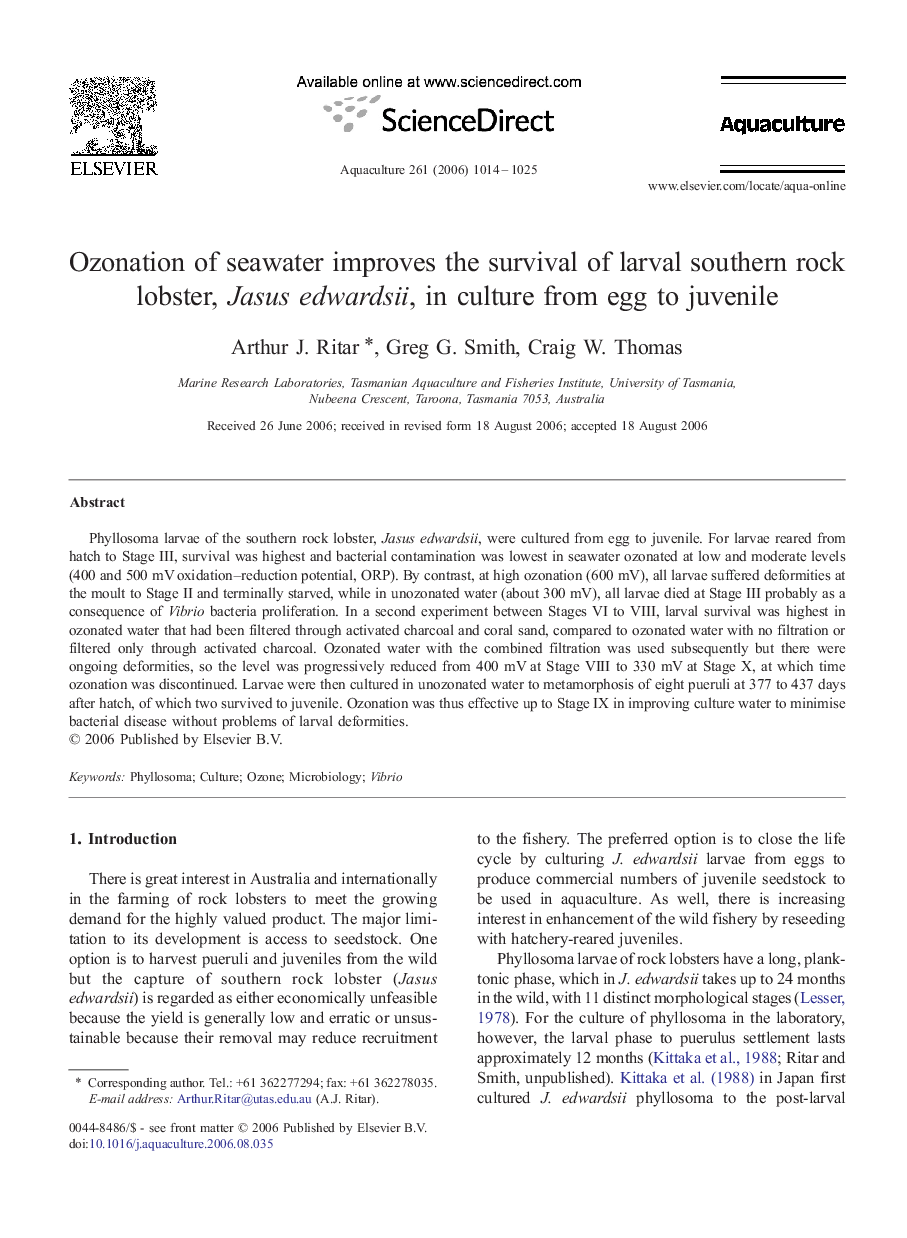| Article ID | Journal | Published Year | Pages | File Type |
|---|---|---|---|---|
| 2425592 | Aquaculture | 2006 | 12 Pages |
Phyllosoma larvae of the southern rock lobster, Jasus edwardsii, were cultured from egg to juvenile. For larvae reared from hatch to Stage III, survival was highest and bacterial contamination was lowest in seawater ozonated at low and moderate levels (400 and 500 mV oxidation–reduction potential, ORP). By contrast, at high ozonation (600 mV), all larvae suffered deformities at the moult to Stage II and terminally starved, while in unozonated water (about 300 mV), all larvae died at Stage III probably as a consequence of Vibrio bacteria proliferation. In a second experiment between Stages VI to VIII, larval survival was highest in ozonated water that had been filtered through activated charcoal and coral sand, compared to ozonated water with no filtration or filtered only through activated charcoal. Ozonated water with the combined filtration was used subsequently but there were ongoing deformities, so the level was progressively reduced from 400 mV at Stage VIII to 330 mV at Stage X, at which time ozonation was discontinued. Larvae were then cultured in unozonated water to metamorphosis of eight pueruli at 377 to 437 days after hatch, of which two survived to juvenile. Ozonation was thus effective up to Stage IX in improving culture water to minimise bacterial disease without problems of larval deformities.
